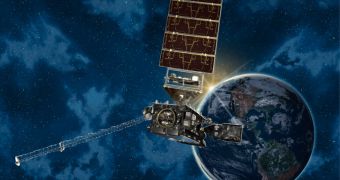Officials with the US National Oceanic and Atmospheric Administration (NOAA) announce that one of the most important instruments to fly on the Geostationary Operational Environmental Satellite-R (GOES-R) spacecraft is now completed and approved for integration with the satellite.
GOES-R is the first of the Administration's next-generation geostationary satellites, designed to argument the existing GOES constellation. Its purpose will be to provide data on Western Hemisphere, to be used for meteorological research, tracking severe storms, forecasting the weather, and tracking space weather patterns around Earth.
The Advanced Baseline Imager (ABI) is the primary GOES-R instrument for collecting new data on our planet's weather patterns, environmental changes and oceans. It is several orders of magnitude more sophisticated than anything NOAA currently operates on similar satellites.
In addition to improving image detail and speed, ABI will also provide support for a new series of natural or man-made hazards, including volcanic ash advisories, severe weather, smokes, and fires.
“The United States is home to some of the most severe weather in the world including tornadoes, hurricanes, snowstorms, floods, and wildfires. The ABI offers […] technology that will help NOAA develop faster and more accurate forecasts that will save lives and protect communities,” says the assistant administrator of NOAA’s Satellite and Information Service, Mary Kicza.
In addition to ABI, the first satellite in the GOES-R series will feature a set of tools for monitoring solar weather, as well as a series of instruments that will facilitate lightning detection for Earth's atmosphere.
The first spacecraft is scheduled to launch in early 2016, aboard an Atlas V 541 rocket. Takeoff will occur from Cape Canaveral Air Force Station's Space Launch Complex-41, in Florida.
The instrument is developed by Fort Wayne, Indiana-based Exelis, which will ship ABI to Lockheed Martin Space Systems, in Colorado, in early 2014. Lockheed is in charge of building and integrating the actual satellite.
Besides ABI, the spacecraft will also include the Geostationary Lightning Mapper, the Space Environment In-Situ Suite, the Solar Ultraviolet Imager, and a magnetometer.

 14 DAY TRIAL //
14 DAY TRIAL // 
